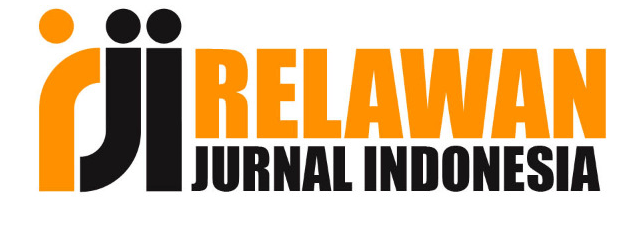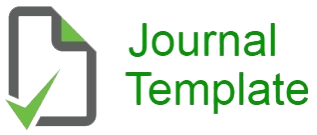Online Submissions
Already have a Username/Password for Edu Masda Journal?
Go to Login
Need a Username/Password?
Go to Registration
Registration and login are required to submit items online and to check the status of current submissions.
Author Guidelines
General Author Guidelines
- The Manuscript should be written in Indonesian or English and have never been published or is not in the process of submission for publication to other media and does not contain elements of plagiarism.
- The Manuscript may take the form of research or case studies.
- The author should register as an author. The guides to register and submit the paper are shown at the end of this page.
- The Manuscript will be published in Edu Masda Journal after being reviewed by peer-reviewers.
- The Manuscript should be prepared according to the following author guidelines and Template. The manuscript template can be downloaded here.
Manuscript Preparation Guidelines
Structure of the manuscripts
- Title
The title should be short, clear, and informative, but does not exceed 20 words. It has to be pinpoint with the issues discussed. The article title does not contain any uncommon abbreviations. The main ideas should be written first and followed by their explanations.
- Author’s names and institutions
The author's names should be accompanied by the author's institutions, institution's address, and email addresses, without any academic titles and job titles.
- Abstract
Abstracts are written in a single paragraph of about 250 words maximum. For research articles, abstracts should give a pertinent overview of the work. We strongly encourage authors to use the following style of structured abstracts, but without headings: (1) Background: Place the question addressed in a broad context and highlight the purpose of the study; (2) Purpose of the Study: Identify the purpose and objective of the study; (3) Methods: Describe briefly the main methods or theoretical framework applied; (4) Results: Summarise the article's main findings; and (5) Conclusions: Indicate the main conclusions or interpretations.
- Keywords
List three to five pertinent keywords specific to the article; yet reasonably common within the subject discipline; use lower case except for names.
- Introduction
The introduction should briefly place the study in a broad context and highlight why it is important. It should define the purpose of the work and its significance. The current state of the research field should be reviewed carefully, and key publications cited. Please highlight controversial and diverging hypotheses when necessary. Finally, briefly mention the main aim of the work and highlight the principal conclusions. As far as possible, please keep the introduction comprehensible to scientists outside your particular field of research. References should be cited as (Kamba, 2018) or (Marchlewska et al., 2019) or (Cichocka, 2016; Hidayat & Khalika, 2019; Ikhwan, 2019; Madjid, 2002) or (Miller & Josephs, 2009, p. 12) or Rakhmat (1989). See the end of the document for further details on references. Technical terms should be defined. Symbols, abbreviations, and acronyms should be defined the first time they are used. All tables and figures should be cited in numerical order.
- Method
The method contains an explanation of the research approach, subjects of the study, the conduct of the research procedure, the use of materials and instruments, data collection, and analysis techniques.
- Results
The results obtained from the research have to be supported by sufficient data. The research results and the discovery must be the answers, or the research hypothesis stated previously in the introduction part.
- Discussion
The discussion is highlighted through the title and subtitles of the section when needed
Authors should discuss the results and how they can be interpreted from the perspective of previous studies and of the working hypotheses. The findings and their implications should be discussed in the broadest context possible. Future research directions may also be highlighted. The following components should be covered in the discussion: How do your results relate to the original question or objectives outlined in the Introduction section (what/how)? Do you provide interpretation scientifically for each of your results or findings presented (why)? Are your results consistent with what other investigators have reported (what else)? Or are there any differences?
- Conclusions
The conclusion should answer the objectives of the research and research discoveries. The concluding remark should not contain only the repetition of the results and discussions or abstract. You should also suggest future research and point out those that are underway.
- References
The literature listed in the References contains only the sources referenced or included in the article. We recommend preparing the references with a bibliography software package, such as Mendeley, EndNote, Reference Manager, or Zotero to avoid typing mistakes and duplicated references. Writing techniques bibliography, using the system cites APA style.
Copyright Notice
Authors who publish in Edu Masda Journal agree to the following terms:
- Authors retain copyright and grant the journal right of first publication with the work simultaneously licensed under a Attribution-ShareAlike 4.0 International (CC BY-SA 4.0) License that allows others to share the work with an acknowledgment of the work's authorship and initial publication in this journal.
- Authors are able to enter into separate, additional contractual arrangements for the non-exclusive distribution of the journal's published version of the work (e.g., post it to an institutional repository or publish it in a book), with an acknowledgment of its initial publication in this journal.
- Authors are permitted and encouraged to post their work online (e.g., in institutional repositories or on their website) prior to and during the submission process, as it can lead to productive exchanges, as well as earlier and greater citation of published work (See The Effect of Open Access).
Privacy Statement
Name, email address, and other data inputted to the Edu Masda Journal will only be used exclusively for journal editorial purposes and will not be used for other purposes and/or for other parties not related to the journal editorial team.





